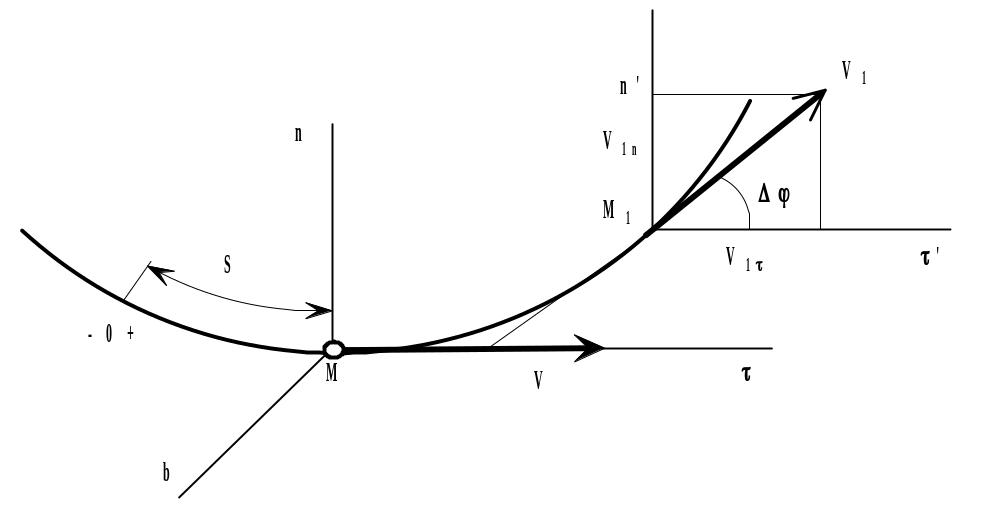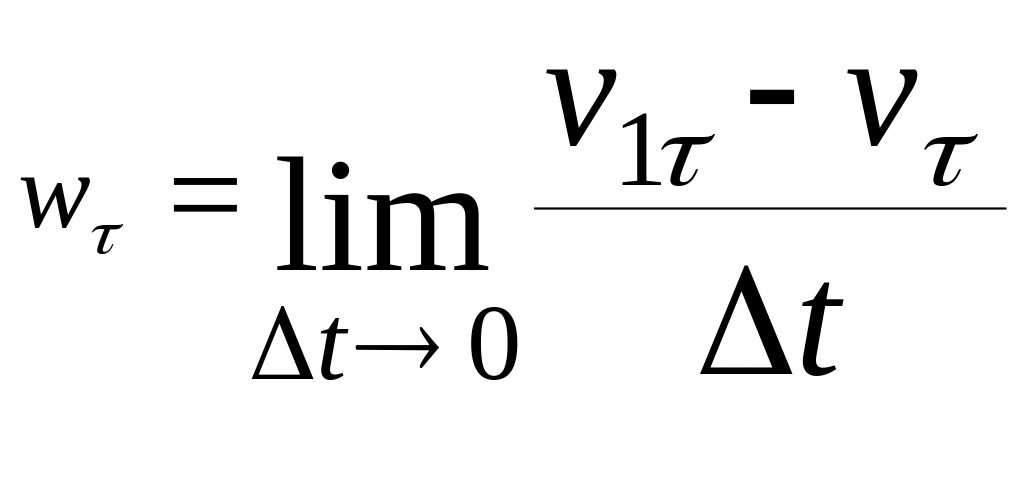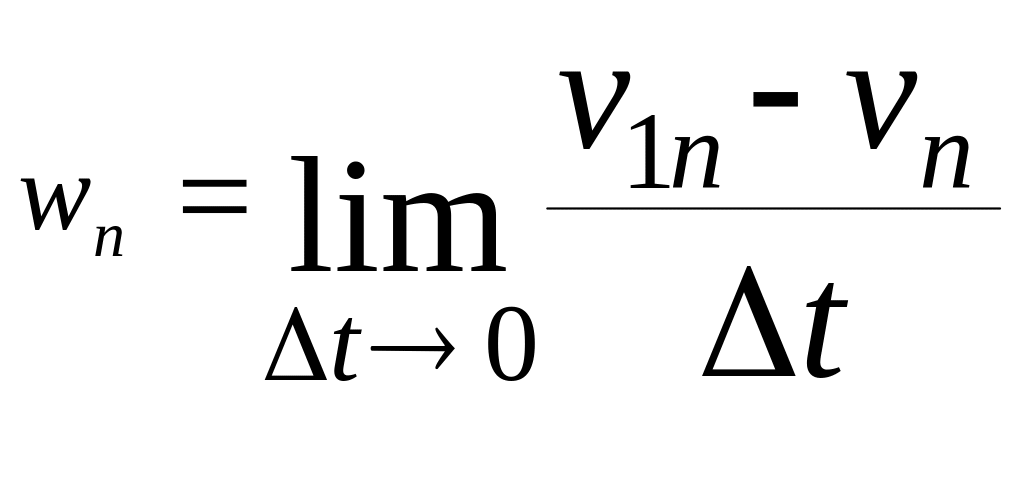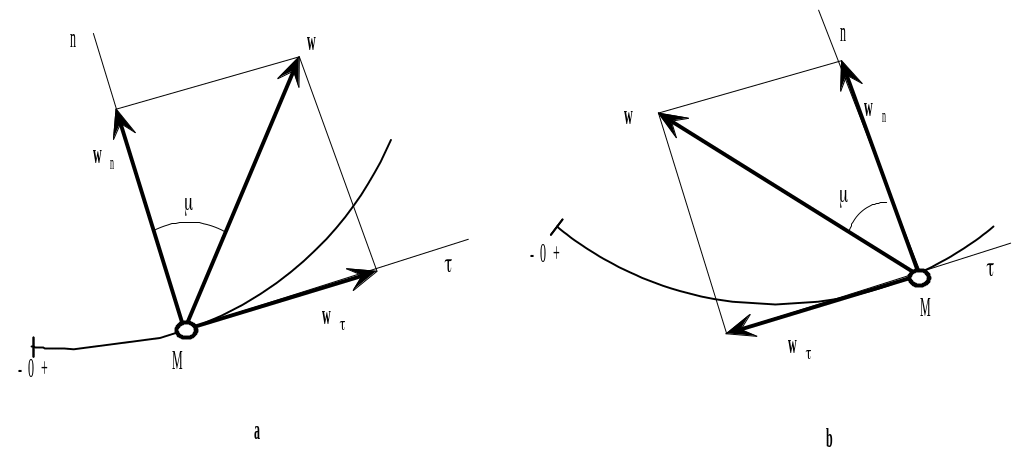
- •Donetsk - 2006
- •Донецьк - 2006
- •Contents
- •What is theoretical mechanics?
- •Kinematics . Kinematics of a Particle. Text 1. Kinematics
- •Kinematics is the section of mechanics, which treats of the geometry of the motion of bodies without taking into account their inertia (mass) or the forces acting on them.
- •2) The verbs corresponding to the following nouns:
- •Text 2. Methods of describing motion of a particle . Path.
- •Part 1. Vector Method of Describing Motion
- •Part 3. Natural Method of Describing Motion
- •Velocity of a Particle.
- •Part 1 . Determination of the Velocity of a Particle when its Motion is described by the Vector Method.
- •Part 2. Determination of the Velocity of a Particle when its Motion is described by the Coordinate Method
- •Part 3. Determination of the Velocity of the Particle when its Motion is described by the Natural Method
- •Unit 4. Acceleration Vector of a Particle.
- •Part 1. Determination of the Acceleration of a Particle when its Motion is described by the Vector Method.
- •Part 2. Determination of the Acceleration of a Particle when its Motion is described by the Coordinate Method
- •Unit 5. Tangential and Normal Accelerations of a Particle.
- •Verbs: direct, introduce, draw, denote, move, sweep, take.
- •Unit 6. Translational Motion of a Rigid Body
- •Unit 7.
- •2) The verbs in the left column with the nouns in the right one.
- •Unit 8.
- •Velocities and Accelerations of the Points of a Rotating Body.
- •Unit 9.
- •Equations of Plane Motion. Resolution of Motion Into Translation and Rotation.
- •Unit 10. The Path and the Velocity of a Point of a Body.
- •Part 1. Determination of the Path of a Point of a Body
- •Part 2. Determination of the Velocity of a Point of a Body
- •Verbs : design, lead to, construct, consider, specify, move, determine, join, calculate, perform.
- •Unit 11.
- •Verbs: obtain, perform, belong, lie, erect, exist , lead.
- •Equation of Motion and Solution of Problems.
- •Part 1. The two problems of dynamics.
- •Part 2. Constrained and unconstrained motion.
- •Verbs: apply, act, account, find, determine, resort.
- •Part 3. Free-body diagram.
- •Unit 14. Work
- •Part 1. Work and kinetic energy.
- •Part 2. Work
- •Part 3. An example of the work done on a body by a variable force.
- •Unit 15. Kinetic energy. Power and Efficiency.
- •Part 1. Kinetic energy.
- •Equal, bring, avoid, do, result, call, correspond, lead, act.
- •Part 2. Power.
- •Part 3. Efficiency.
- •As, due to, because, so that, on the other hand, in addition to , since.
- •Commonly used mathematical symbols and expressions.
- •The Greek alphabet.
- •Vocabulary
- •Literature
Unit 5. Tangential and Normal Accelerations of a Particle.
Learn the following words and word combinations by heart:
by virtue of the definition be determined from |
на основании определения быть определенным из |
denote |
означать, обозначать |
draw a line through a point include |
провести линию через точку включать |
instant of time |
момент времени |
in terms of |
с точки зрения… |
limits of each of the cofactors inside the brackets |
пределы каждого алгебраического дополнения в скобках |
multiply |
умножить |
product of….by right –hand side of the equation stationary coordinate axes |
произведение …на правая сторона уравнения неподвижная система координат |
sweep around |
колебаться, развертываться вокруг |
sweep of tangent |
колебание, развертывание касательной |
value of the velocity |
значение скорости |
Ex.1. Look at Appendix 1 and read the following mathematical symbols and Greek letters.
τ,
w, Δφ,
![]() .,
sin , wn>0,
.,
sin , wn>0,
We
can already compute the acceleration vector![]() according to its projections on stationary coordinate axes Oxyz.
In
the natural method of describing motion, vector
is
determined from its projections on a set of coordinate axes Mτ
nb
whose origin is at M
and who move together with the body (Fig. 6).
according to its projections on stationary coordinate axes Oxyz.
In
the natural method of describing motion, vector
is
determined from its projections on a set of coordinate axes Mτ
nb
whose origin is at M
and who move together with the body (Fig. 6).
The acceleration of a particle lies in the osculating plane, i.e., plane Mτn, hence the projection of vector on the binormal is zero (wb = 0).

Fig. 6
Let
us calculate the projection of
on
the other two axes. Let the particle occupy a position M and
have a velocity
![]() at
any time t, and at time t1=t+Δt
let it occupy a position M1 and
have a velocity
at
any time t, and at time t1=t+Δt
let it occupy a position M1 and
have a velocity
![]() .
Then, by virtue of the definition,
.
Then, by virtue of the definition,
![]()
Let us now express this equation in terms of the projections of the vectors on the axes Mτ and Mn through point M (see Fig. 6). From the theorem of the projection of a vector sum (or difference) on an axis we obtain:
 ,
,
 .
.
Noting that projections of a vector on parallel axes are equal, draw through point M1 axes Mτ' and Mn' parallel to Mτ and Mn respectively, and denote the angle between the direction of vector and the tangent Mτ by the symbol Δφ. This angle between the tangents to the curve at points M and M1 is called the angle of contiguity.
It
will be recalled that the limit of the ratio of the angle of
contiguity Δφ to the arc
![]() = s defines the
curvature k of the curve at the point M. As the
curvature is the inverse of the radius of curvature
at M, we have:
= s defines the
curvature k of the curve at the point M. As the
curvature is the inverse of the radius of curvature
at M, we have:
.
From
the diagram in Fig. 6, we see that the projections of vectors
and
![]() on the axes M and
Mn are
on the axes M and
Mn are
v = v, vn = 0,
v1 = v1 cos , v1n = sin ,
where v and v1 are the numerical values of the velocity of the particle at instants t and t1. Hence,
![]() ,
, ![]() .
.
It
will be noted that when
![]() ,
point M1 approaches M indefinitely, simultaneously
,
point M1 approaches M indefinitely, simultaneously
![]() ,
,
![]() and
and
![]() .
.
Hence,
taking into account that
![]() ,
we obtain for w
the expression
,
we obtain for w
the expression
![]() .
.
We shall transform the right-hand side of the equation for wn in such a way so that it includes ratios with known limits. For this purpose, multiplying the numerator and denominator of fraction under the limit sign by s, we find:
![]() , (23)
, (23)
since, when , the limits of each of the cofactors inside the brackets are as follows:
![]() .
.
Finally we obtain
![]() ,
, ![]() . (24)
. (24)
We have thus proved that the projection of acceleration of a particle on tangent to the path is equal to the first derivative of numerical value of the velocity, or the second derivative of the displacement (the arc coordinate) s, with respect to time; the projection of the acceleration on the principal normal is equal to the second power of the velocity divided by the radius of curvature of the path at the given point of curve, the projection of acceleration on the binormal is zero (wb = 0). This is an important theorem of particle kinematics.
When
particle M is moving in one plane, the tangent M
sweeps around the binormal Mb with an angular velocity
![]() .
By introducing this quantity into Eq. (23) we can obtain one more
equation for calculating wn that is frequently used in
practice:
.
By introducing this quantity into Eq. (23) we can obtain one more
equation for calculating wn that is frequently used in
practice:
Wn = v (24.1)
i.e. normal acceleration equals the product of a particle’s velocity by angular velocity of the sweep of tangent to the path.

Fig. 7
Lay
off vectors
![]() and
and
![]() ,
i.e. the normal and tangential components of the acceleration, along
the tangent M and
the principal normal Mn, respectively (Fig. 7). The component
is always directed along the inward normal, as wn>0, while
the component
can be directed either in the positive or in the negative direction
of axis M,
depending on the sign of the projection w
(see Figs. 7 a and b).
,
i.e. the normal and tangential components of the acceleration, along
the tangent M and
the principal normal Mn, respectively (Fig. 7). The component
is always directed along the inward normal, as wn>0, while
the component
can be directed either in the positive or in the negative direction
of axis M,
depending on the sign of the projection w
(see Figs. 7 a and b).
The acceleration vector is the diagonal of a parallelogram constructed with the components and as its sides. As the components are mutually perpendicular, the magnitude of vector and its angle to the normal Mn are given by the equations:
 (25)
(25)
Thus, if the motion of a particle is described by the natural method and the path (and, consequently, the radius of curvature at any point) and the equations of motion (20) are known, from Eqs. (22), (24), and (25) we can determine the magnitude and direction of the velocity and acceleration vectors of the particle for any instant.
Comprehension check.
Ex.2. Put the questions to the following answers.
It happens when Δt tends to zero.
To the first derivative of numerical value of the velocity.
It sweeps around the binormal Mb with an angular velocity .
It equals the product of a particle’s velocity by angular velocity of the sweep of tangent to the path.
Along the inward normal.
Either in the positive or in the negative direction of axis M.
Ex.3 .Say whether the following statements are True or False.
The curvature is the inverse of the radius of curvature at the definite point.
The projection of acceleration of a particle on tangent to the path is equal to the second power of the velocity divided by the radius of curvature of the path at the given point of curve.
Normal acceleration equals sum of a particle velocity and angular velocity of the sweep of tangent to the path.
The component is always directed along the inward normal.
The acceleration vector is the diagonal of a parallelogram constructed with the components and as its sides.
Ex.4. Complete the following sentences with the information from the text.
The limit of the ratio of the angle of contiguity…
V and V1 are the numerical values of …
The projection of the acceleration on the principal normal is equal …
Noting that projections of a vector on parallel axes are equal, draw…
When particle M is moving in one plane, the tangent…
Ex.5. Match the words from the left column with those in the right one. The words in the right column can be used more than once.
-
1
stationary
a
of contiguity
2
method of
b
with known limits
3
set of
c
the definition
4
lie
d
coordinate axes
5
projection on
e
in terms of
6
by virtue of
f
in the osculating plane
7
express
g
the curvature of the curve
8
the angle
h
describing motion
9
define
i
of curvature
10
radius
11
ratio
Ex.6. Fill in the corresponding verbs in a suitable form and particles .
